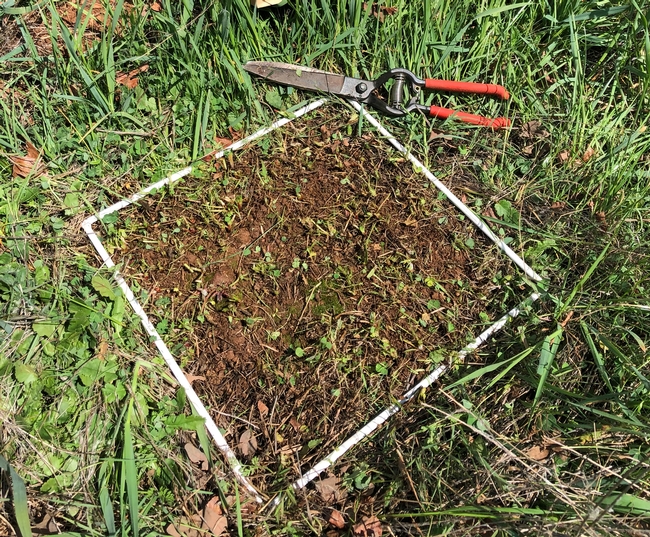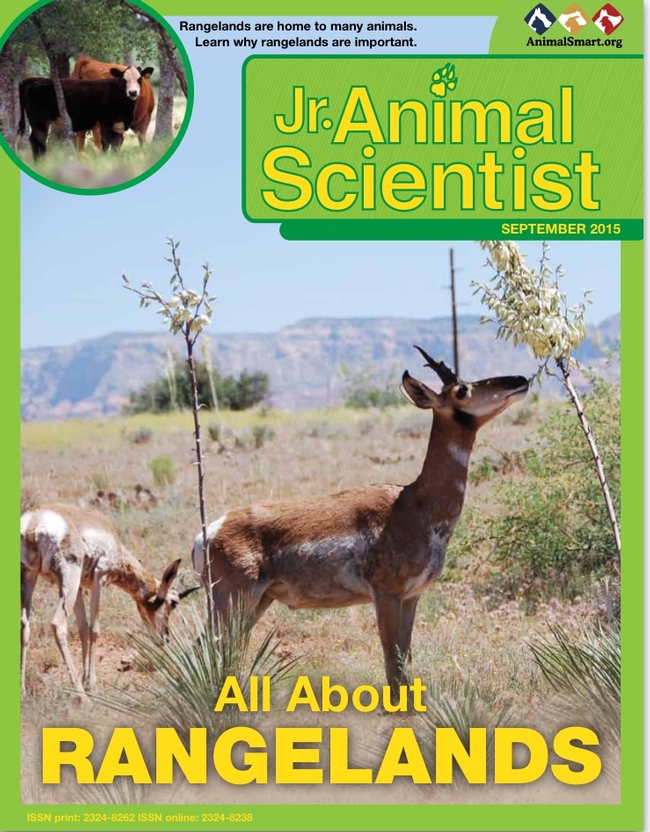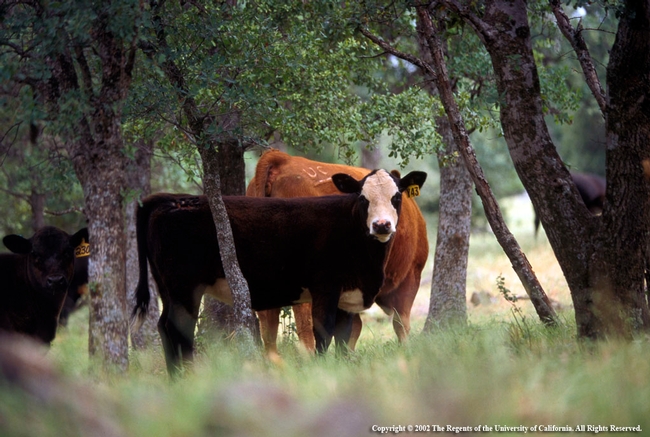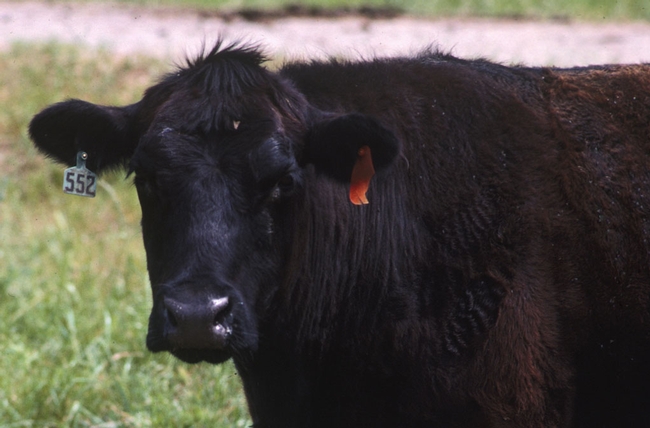Posts Tagged: Theresa Becchetti
Rancher wisdom can be improved with science
When California was part of the Wild West, it took a certain amount of guesswork to move cattle from their home range to summer pastures while making sure sufficient forage was left behind to hold the cattle over till fall rainfall spurred new growth.
“Ranchers eyeballed it,” said Theresa Becchetti, UC Cooperative Extension livestock and natural resources advisor. “In time, second-, third-, and fourth-generation ranchers got pretty good at deciding, but UC Cooperative Extension introduced a more scientific approach.”
In the spring of 1936, the USDA Forest Services began measuring ungrazed forage at the San Joaquin Experimental Range in Madera County. The project continues today as a joint effort of UC Cooperative Extension and the USDA Natural Resources Conservation Service.
Sixteen years later, just after the UC Hopland Research and Extension Center was established on Mendocino County rangeland in 1951, another study began; and in the early 1980s, scientists at the UC Sierra Foothills Research and Extension Center in Browns Valley commenced a similar long-term study.
As scientists learned of the multiple factors impacting forage production across the Coast Range and Sierra Nevada foothills, some 70 research sites were identified – most on private land - and consistently monitored. The results show that there is much more to understanding forage growth than looking at a rain gauge.
|
Above, watch a full season of rangeland forage growth in one minute. UC Cooperative Extension rangeland and natural resources advisor Royce Larsen set up a camera to capture images of the daily grass growth on Pozo Peak in San Luis Obispo County. |
While high annual rainfall usually results in high forage production and low annual rainfall generally results in low annual production, there are exceptions. It all depends on the timing of the rainfall.
During the devastating drought of 2011-2016, Becchetti noticed forage production didn't mirror the drought damage to state water resources and mountain forests.
“It was interesting,” said Becchetti. “In a lot of my plots, forage would be close to normal. We got rain when the soil was warming up. If we get rain in the late fall or winter, there is no grass production because it's too cool. If rains come when the temperatures warmed up, the grass takes off.”
The expected variation from climate change is another factor that encourages UCCE scientists to conduct routine forage monitoring.
“When I started 11 years ago, we had some good production years; we had poor years, a couple of normal years,” Becchetti said. “Monitoring is giving us a better snapshot that all of us can use to see the impact of climate change on forage production.”
To develop an accurate picture of forage growth, the research locations are fenced or caged to keep out grazing animals. Grass and forbs within one square foot of the exclosure is clipped to the ground. The vegetation is dried, weighed and the figures logged in a database.
Long-term production data are particularly valuable for the three research stations because daily weather data that are also collected there can be used to determine the effects of rainfall and temperature on annual forage productivity.
Year-to-year variability at the Hopland research site ranged from 900 pounds of forage per acre in the poorest year, up to a 3,500 pounds per acre bounty when conditions were just right. Average annual production at Hopland is 2,399 pounds per acre. At the Sierra Foothill Research and Extension Center, annual forage ranged from a low of 1,071 per acre up to 4,696 pounds per acre. The average annual production there is 2,971 per acre.
“There is no way we could represent the exact forage production across the state, but this does allow us to come up with a percent either below or above normal for a particular area,” Becchetti said.
The monitoring research conducted by UCCE scientists are important to provide guidance to county agricultural commissioners and local Farm Service Agencies.
“If you think about it, so many of our ag commodities are based on weight or volume,” said Scott Oneto, UCCE rangeland and natural resources advisor in El Dorado, Tuolumne, Calaveras and Amador counties, where annual monitoring has been conducted for 25 years. “But annual rangelands are so different when it comes to figuring out whether a given year is average, above average or below average. And when crop insurance is involved, it makes it very difficult for ag commissioners to declare a loss if they don't know what the loss is or if there even was one.”
Becchetti, along with 14 current and former UCCE colleagues, wrote a 12-page review of UCCE's ongoing range forage production study, which includes average production for many of the study sites. ANR Publication 8018 is available for free download from the UC ANR publication catalog.
4-H youth help with alpacas at Marin County ranch
"If they have too much fleece, they can die from the heat," said Kylie Horn, 14, one of the 4-H members helping out.
UC Cooperative Extension livestock advisor Theresa Becchetti, said alpaca operations are typically hobby farms, unlike ranches that raise sheep and other livestock. Becchetti said most hobby farmers tend to overstock their pastures and manage resources incorrectly, which can pose problems with soil health, water quality, invasive species, animal health and forage production.
At an alpaca farm in Stanislaus County, Becchetti found that the animals were overgrazing, allowing for invasive weeds to take root.
"They have a person who cleans the pastures of manure every day so they can better manage animal health," she said. "They feed hay every day, which will increase their operating costs."
Children’s magazine focuses on rangeland animals
Rangeland is where deer and antelope play. It is also home for grazing livestock and many other animals. “Almost half of the land on Earth is rangeland and one-third of the United States is rangeland,” the latest issue of Jr. Animal Scientist tells its young readers. A UC Agriculture and Natural Resources (UC ANR) advisor is among the scientists who contributed to the rangeland issue of the children's magazine.
Jr. Animal Scientist is published by the American Society of Animal Science for children aged 5 to 12 who are interested in animals. For the September 2015 issue, members of the Society for Range Management collaborated with ASAS to provide photos and facts about rangeland.
Theresa Becchetti, UC ANR Cooperative Extension livestock and natural resource advisor for Stanislaus and San Joaquin counties, and Lisa Page, from the University of Arizona, served as co-editors for the special issue.
“Our goal is to have kids and their parents and teachers learn the value of rangelands, beyond being used to produce beef and lamb; they also provide habitat for wildlife,” said Becchetti. “Rangelands can produce energy – solar, wind and oil – while providing clean water and air and a place for recreation. These resources are protected by ranching families, the stewards who make their homes on rangeland.”
In the magazine, readers will find descriptions of the different kinds of rangeland, a map of rangelands and photos of some wildlife species that live on rangelands. It also includes a word scramble and rangeland-related jokes (“Why do cows wear bells? Because their horns don't work!”)
“As a member of the Society for Range Management, and working on developing curriculum on rangelands in California, I was excited to be involved in the effort,” Becchetti said. “The magazine has a national circulation with a mix of families and schools.”
A PDF of the Jr. Animal Scientist rangeland issue can be viewed at http://ucanr.edu/sites/news/files/220859.pdf.
The hills are green, but the grass is going to seed
Ranchers rely on unirrigated rangeland to feed cattle through the winter. This year, a lack of rain required ranchers to bring in supplemental feed and cull their herds early.
Theresa Becchetti, UC Cooperative Extension advisor in Stanislaus County, said much of the grass growth on rangeland has slowed and is going to seed, though there are some grass species still growing that “can take advantage of the rain we have had," Holland reported.
Becchetti and other experts are collecting vegetation samples in the region, which could be used in requests for federal disaster aid.
A UC research station in Yuba County offers a glimpse of what could be found around much of the state, the story said. As of March 1, dry matter in grasses averaged 400 pounds per acre, compared with a historical average of 685 pounds and a high of 1,590 in rainy 1997.
California's dry winter is leaving west side cattle hungry
The long rainless winter resulted in grass growth on the west side of the San Joaquin Valley about 80 percent less than usual, reported John Holland in the Modesto Bee. Spring rain pushed somewhat more growth on the valley's east side, which was charted at 55 to 70 percent less than normal.
Theresa Becchetti, UC Cooperative Extension advisor in Stanislaus and San Joaquin counties, a livestock expert, and Diana Waller, district conservationist for the U.S. Natural Resources Conservation Service, reported the conditions in a letter last month to county and federal agriculture officials.
Fall 2011 rain helped germinate seeds, but "unfortunately, that is where it ended," they wrote.
A cattle producer quoted in the story said the poor feed conditions are offset somewhat by beef prices that have remained strong.
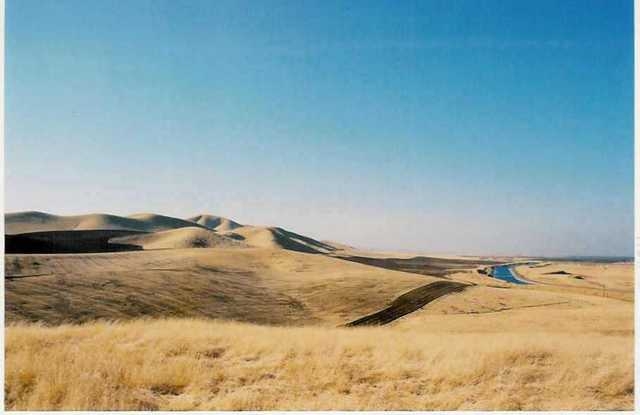
The USDA reported that nonirrigated range condition was poor to fair, with some higher-elevation range in good to fair condition.


